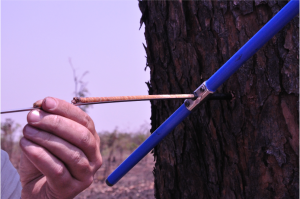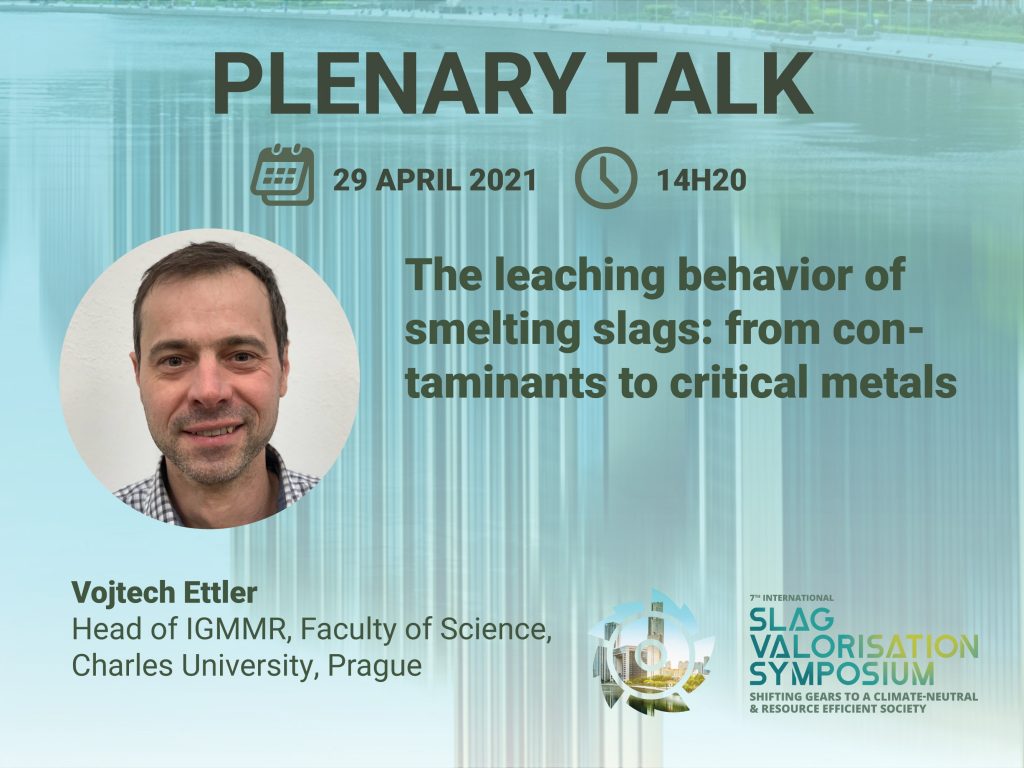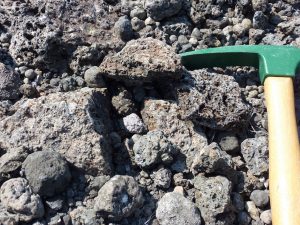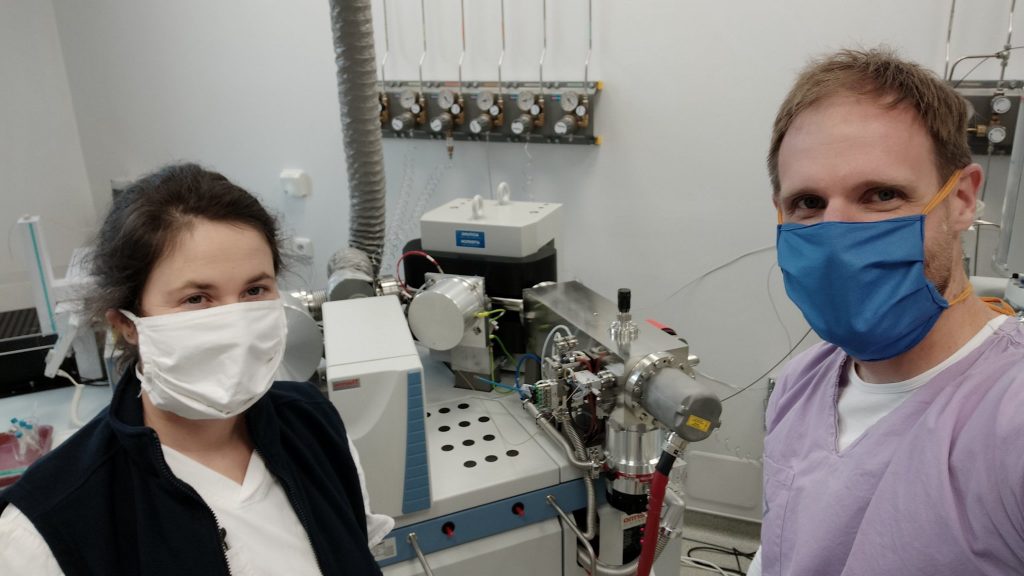 We used pine tree rings and soil geochemistry to expose the activity of a Pb-Zn smelter in Kabwe, Zambia. We found that local soils are extremely contaminated (up to 16000 mg/kg Pb; 14000 mg/kg Zn; 600 mg/kg Cu in the topsoil). Also, metal bearing particles share their Pb isotopic signature with smelting by-products, and more concerning, metals in tree biomass. We concluded that these metals enter the tree though the bark and leaves, not the roots, implying airborne contamination. Using Pb and C isotopes we mapped the dendrochronology of the tree and verified its susceptibility to changes in smelter production throughout the late 20th century.
We used pine tree rings and soil geochemistry to expose the activity of a Pb-Zn smelter in Kabwe, Zambia. We found that local soils are extremely contaminated (up to 16000 mg/kg Pb; 14000 mg/kg Zn; 600 mg/kg Cu in the topsoil). Also, metal bearing particles share their Pb isotopic signature with smelting by-products, and more concerning, metals in tree biomass. We concluded that these metals enter the tree though the bark and leaves, not the roots, implying airborne contamination. Using Pb and C isotopes we mapped the dendrochronology of the tree and verified its susceptibility to changes in smelter production throughout the late 20th century.
Baieta R., Mihaljevič M., Ettler V., Vaněk A., Penížek V., Trubač J., Kříbek B., Ježek J., Svoboda M., Sracek O., Nyambe I. (2021): Depicting the historical pollution in a Pb–Zn mining/smelting site in Kabwe (Zambia) using tree rings. Journal of African Earth Sciences 181, 104246. (DOI)






 Arsenic-rich stalactites (0.13-294 g/kg As) collected from abandoned adits of the Plavno and Mikulov mines (NW Czech Republic) consist of HFA, HFO, kaňkite, schwertmannite, and hydrous manganese oxide mineral phases. These phases were often combined in one stalactite, forming domains, layers and coprecipitates. The microbial communities indicated autotrophic oxidation of Fe(II), As(III), and reduced sulphur compounds as the most notable biological processes influencing the mineralogy in studied stalactites.
Arsenic-rich stalactites (0.13-294 g/kg As) collected from abandoned adits of the Plavno and Mikulov mines (NW Czech Republic) consist of HFA, HFO, kaňkite, schwertmannite, and hydrous manganese oxide mineral phases. These phases were often combined in one stalactite, forming domains, layers and coprecipitates. The microbial communities indicated autotrophic oxidation of Fe(II), As(III), and reduced sulphur compounds as the most notable biological processes influencing the mineralogy in studied stalactites. Vojtěch Ettler will give a plenary lecture entitled “The leaching behavior of smelting slags: from contaminants to critical metals” on the
Vojtěch Ettler will give a plenary lecture entitled “The leaching behavior of smelting slags: from contaminants to critical metals” on the  We combined selective chemical extractions and S isotopes to examine the mobility of As and trace metals (Co, Cu, Ni) in two Czech wetland soils enriched in authigenic Fe-As sulfide minerals through the drying process. We found that As and trace metals released via oxidation of the sulfide phases (particularly Fe sulfides) were almost entirely sequestered by Fe(III) (oxyhydr)oxides, but concomitant acidification resulted in the pH-dependent release of the As(III) and trace metals. Although our results documented the relatively low As mobilization potential under relatively short droughts (several weeks), the preservation of the anoxic conditions must be regarded as a fundamental management strategy of these and other sulfidic wetlands enriched in As.
We combined selective chemical extractions and S isotopes to examine the mobility of As and trace metals (Co, Cu, Ni) in two Czech wetland soils enriched in authigenic Fe-As sulfide minerals through the drying process. We found that As and trace metals released via oxidation of the sulfide phases (particularly Fe sulfides) were almost entirely sequestered by Fe(III) (oxyhydr)oxides, but concomitant acidification resulted in the pH-dependent release of the As(III) and trace metals. Although our results documented the relatively low As mobilization potential under relatively short droughts (several weeks), the preservation of the anoxic conditions must be regarded as a fundamental management strategy of these and other sulfidic wetlands enriched in As.
 Vanadium is a key critical metal with many applications in the steel and chemical industry. Slags issued from the metallurgical processing of Pb-Zn vanadate ores at Berg Aukas (Namibia) and Kabwe (Zambia) exhibit interestingly high concentrations of V (up to 6140 ppm) and can be considered potential sources of this metal. Two papers published recently by our research group focused on geochemistry and mineralogy of these slags combined with laboratory simulation of the hydrometallurgical extractive processes in view of potential V recovery. The results indicate that, despite high V bulk concentrations and extractabilities, its recovery seems to be non-economical, mainly due to low prices of V (and other associated valuable elements such as Zn) on the global market.
Vanadium is a key critical metal with many applications in the steel and chemical industry. Slags issued from the metallurgical processing of Pb-Zn vanadate ores at Berg Aukas (Namibia) and Kabwe (Zambia) exhibit interestingly high concentrations of V (up to 6140 ppm) and can be considered potential sources of this metal. Two papers published recently by our research group focused on geochemistry and mineralogy of these slags combined with laboratory simulation of the hydrometallurgical extractive processes in view of potential V recovery. The results indicate that, despite high V bulk concentrations and extractabilities, its recovery seems to be non-economical, mainly due to low prices of V (and other associated valuable elements such as Zn) on the global market.


 Mercury distribution in topsoils and vegetation samples and temperature-dependent Hg mobilization simulating wildfires have been investigated near a Cu smelter in semi-arid Namibia. The thermo-desorption experiments performed on the representative Hg-rich topsoils indicated that >91% of the Hg was released at ~340°C, which corresponds to the predominant grassland-fire conditions. Despite the installation of a sulfuric acid plant in the smelter in 2015 and a calculated drop in the estimated Hg emissions (from 1301 ± 457 kg/y for the period 2004-2015 to 67 ± 5 kg/y after 2015), the Hg legacy pool in the smelter surroundings will contribute to wildfire-driven Hg emissions until its complete burn-out. Using the Hg spatial distribution data in the area (184 km2), the estimates indicate that up to 303 kg and 1.3 kg can be remobilized from the topsoils and vegetation, respectively.
Mercury distribution in topsoils and vegetation samples and temperature-dependent Hg mobilization simulating wildfires have been investigated near a Cu smelter in semi-arid Namibia. The thermo-desorption experiments performed on the representative Hg-rich topsoils indicated that >91% of the Hg was released at ~340°C, which corresponds to the predominant grassland-fire conditions. Despite the installation of a sulfuric acid plant in the smelter in 2015 and a calculated drop in the estimated Hg emissions (from 1301 ± 457 kg/y for the period 2004-2015 to 67 ± 5 kg/y after 2015), the Hg legacy pool in the smelter surroundings will contribute to wildfire-driven Hg emissions until its complete burn-out. Using the Hg spatial distribution data in the area (184 km2), the estimates indicate that up to 303 kg and 1.3 kg can be remobilized from the topsoils and vegetation, respectively. Karen Hudson-Edwards, Professor in Sustainable Mining at University of Exeter (UK), will give a lecture entitled „Environmental Minerals: Bacteria, Worms, Dusts, Toxins and the Human Body“ on Monday 13th January 2020 at 3 pm in Ložiskové sbírky (room no. 120, Albertov 6 building, Faculty of Science, Charles University). The lecture takes part of the European Association of Geochemistry Lecture Tour and is partly supported by Center for Geosphere Dynamics. You are cordially invited!
Karen Hudson-Edwards, Professor in Sustainable Mining at University of Exeter (UK), will give a lecture entitled „Environmental Minerals: Bacteria, Worms, Dusts, Toxins and the Human Body“ on Monday 13th January 2020 at 3 pm in Ložiskové sbírky (room no. 120, Albertov 6 building, Faculty of Science, Charles University). The lecture takes part of the European Association of Geochemistry Lecture Tour and is partly supported by Center for Geosphere Dynamics. You are cordially invited!